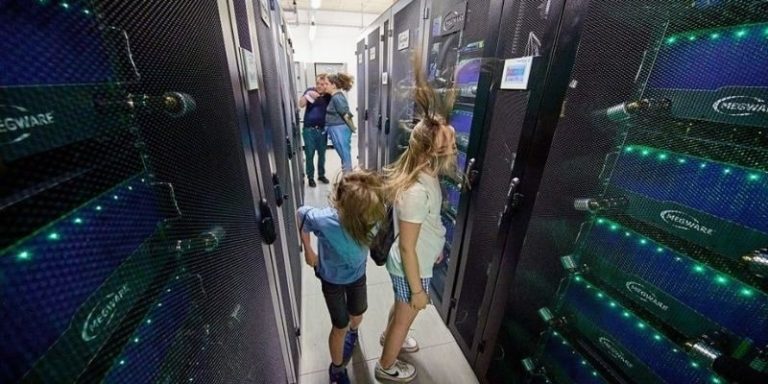The Latest Supercomputer Is Breaking Speed Barriers
“Computers are incredibly fast, accurate, and stupid. Human beings are incredibly slow, inaccurate, and brilliant. Together they are powerful beyond imagination.” – Albert Einstein.
By: Kirsten Brooker | July 15, 2022 | 519 Words

(Photo by Georges Schneider/Xinhua via Getty Images)
People may not realize that when they ask Siri for the weather forecast or to play their favorite song, artificial intelligence uses a supercomputer to gather the data. Today, there are over 500 supercomputers around the world, but some of them are more powerful than others. The newest one has been built in Tennessee, and it recently broke a record for speed.
So, what’s the difference between a supercomputer and the normal computers that most Americans regularly use? Actually, a supercomputer involves a lot of computers working together. These machines are connected in a special way so they can perform calculations faster than normal computers, and the calculations are more complex. Supercomputers are very large, often taking up a whole room. They are used for complex tasks like advanced math problems, simulations, predicting the weather, and other scientific research.
Frontier – The Fastest Supercomputer to Date
The latest and fastest supercomputer has made its debut and is the first to officially reach the exascale, meaning it can perform a quintillion (1,000,000,000,000,000,000) calculations per second. This monster machine is called Frontier.
 Justin Whitt, a computational scientist at Oak Ridge National Laboratory, describes the magnitude of the computer. He said, “Tens of thousands of processors are stored in cabinets about as big as refrigerators. They take up an area about the size of a basketball court. In total, Frontier weighs about as much as two Boeing 747 jets.”
Justin Whitt, a computational scientist at Oak Ridge National Laboratory, describes the magnitude of the computer. He said, “Tens of thousands of processors are stored in cabinets about as big as refrigerators. They take up an area about the size of a basketball court. In total, Frontier weighs about as much as two Boeing 747 jets.”
The size is not the only shocking thing about it. The machine can solve some of the most intricate problems that aid in creating new drugs, treating diseases, designing more dependable materials for batteries and structures, and learning more about quantum physics. The possibilities seem endless, and it is an exhilarating time for computer scientists.
Though there are claims that the Chinese have already broken the exascale speed barrier, there are no official reports to back it up. Frontier took about three years to build, and it will be ready for use later this year.
A Walk Through History
The first supercomputer was designed and built by an electrical engineer, Seymour Cray, in the 1960s. Cray’s invention, the CDC 6600, could do about 3 million calculations per second. Over the next three decades, he developed more computers, each one a little faster than the one before it. Cray, however, was not the only person interested in the field.
Multiprocessor systems, created by a student named W. Daniel Hillis, were a breakthrough in the world of computers. The Connection Machine, or CM-1, was Hillis’ creation. It held 65,536 single-bit processors. Since there were more processors, the computer could perform faster than other machines at the time.
Japanese systems took over the world of supercomputing in the 1990s until the American companies Intel and IBM joined the fun. IBM broke the mold in 2007 with the Roadrunner, the first supercomputer to do one quadrillion operations per second.
A look through history shows that, as technology advances, the time between breakthroughs gets shorter. Frontier is the fastest computer in the world today – but how long before another takes the title?
















